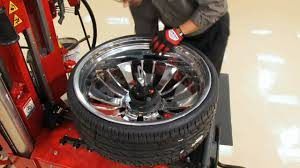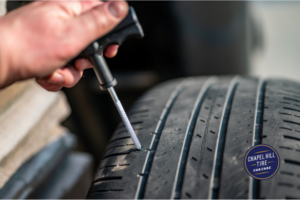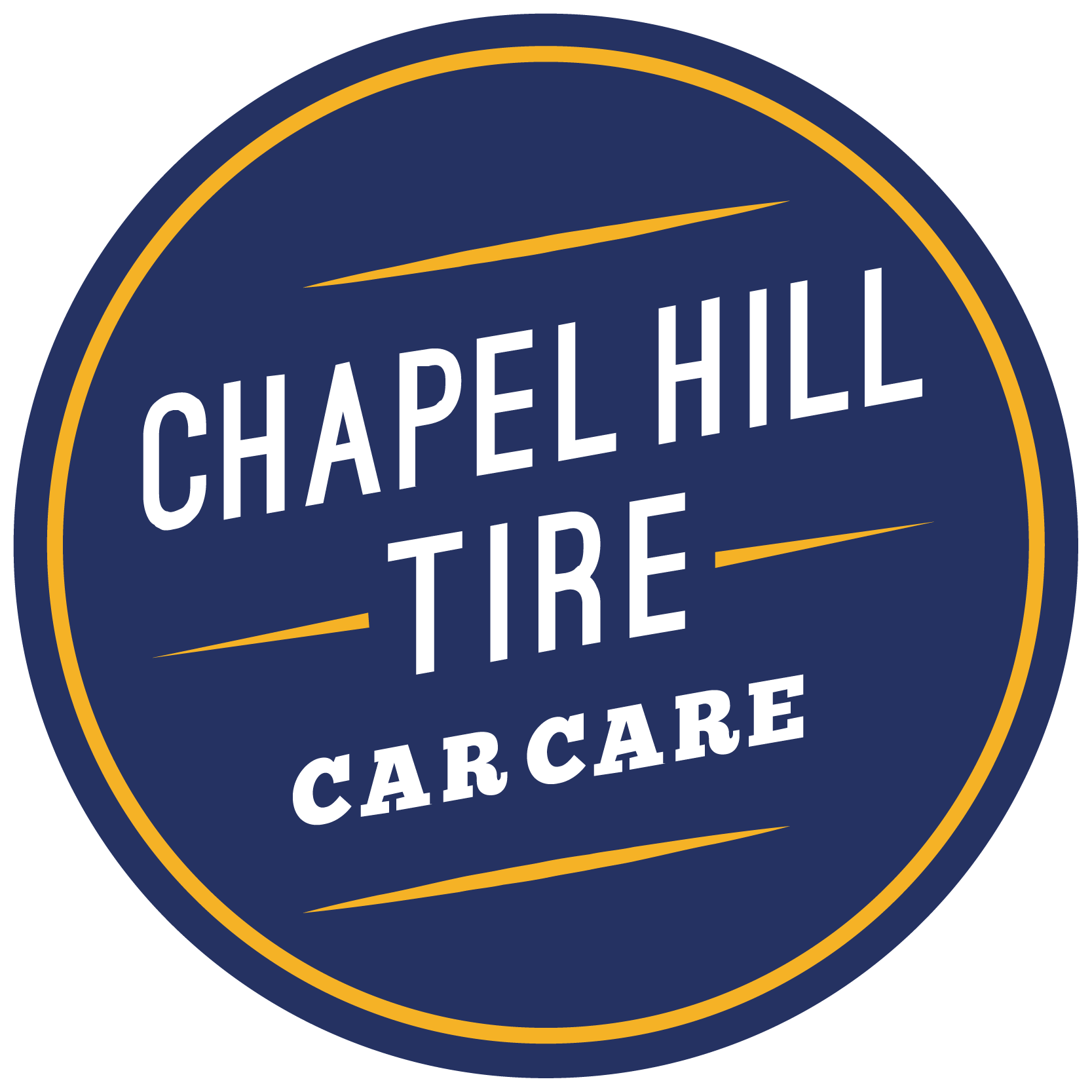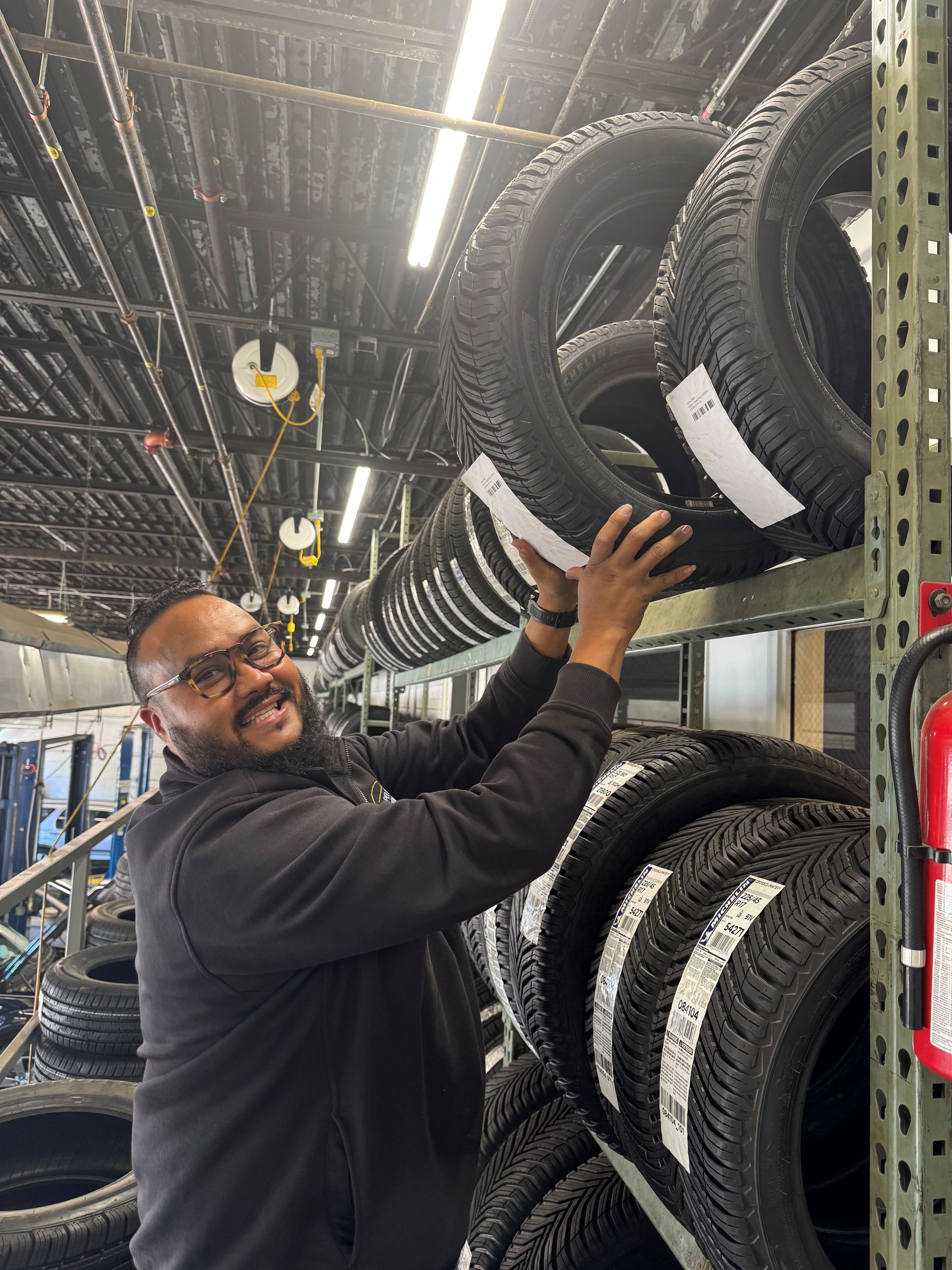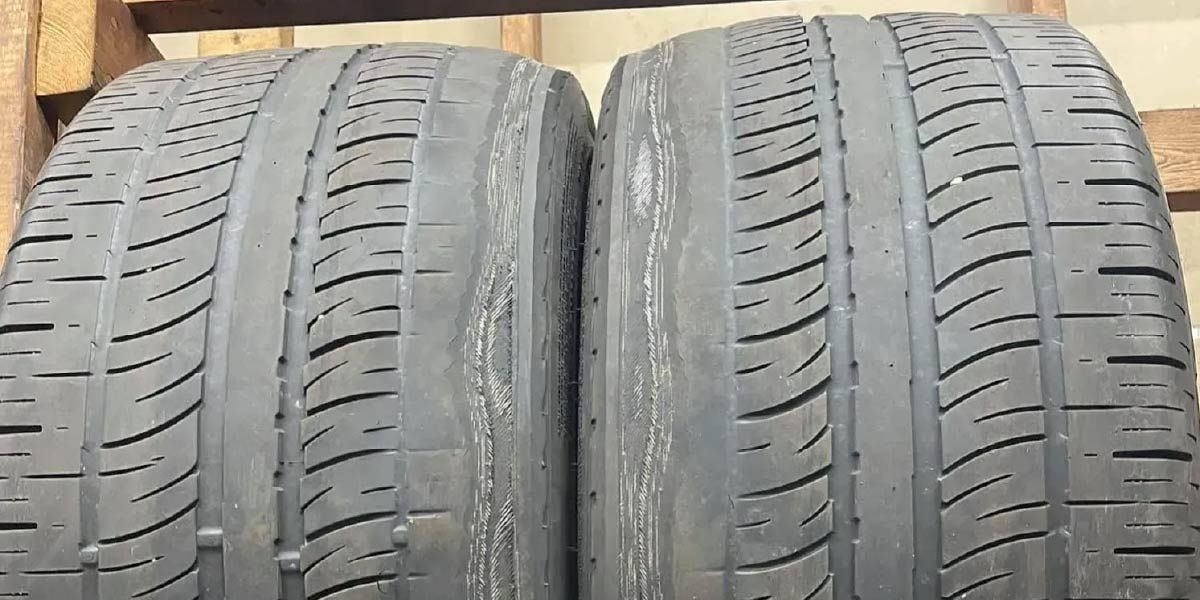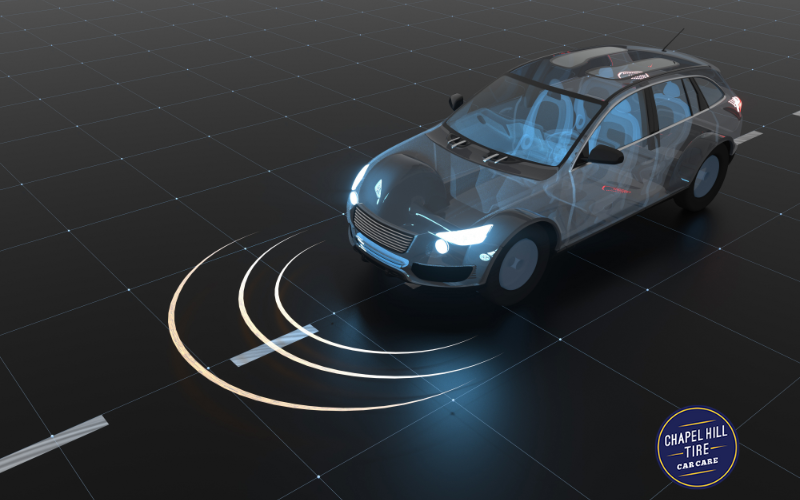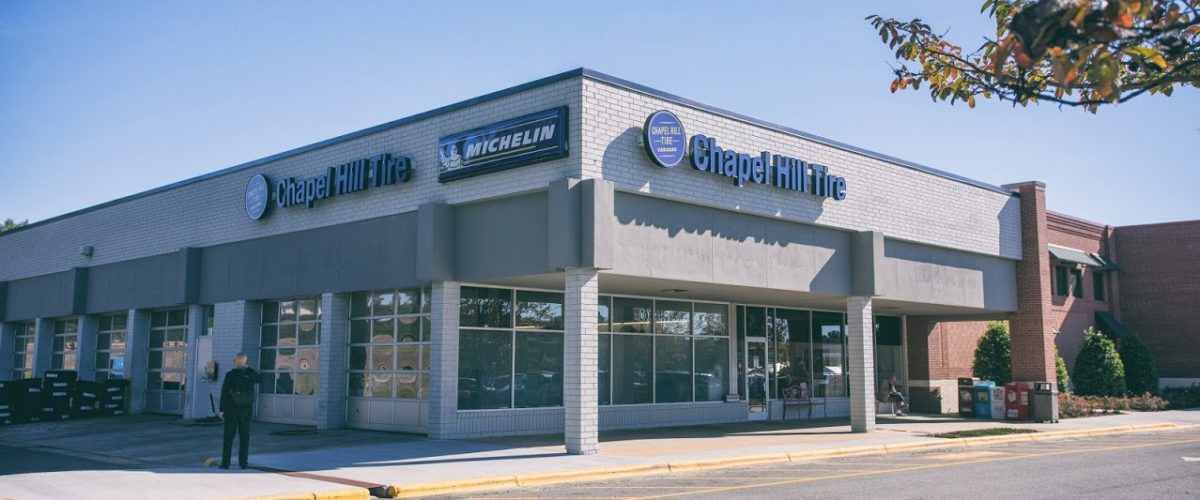How to Check Your Car’s Tire Pressure
Auto Shops Located in: Chapel Hill, Durham, Taleigh, Apex, and Cary North Carolina
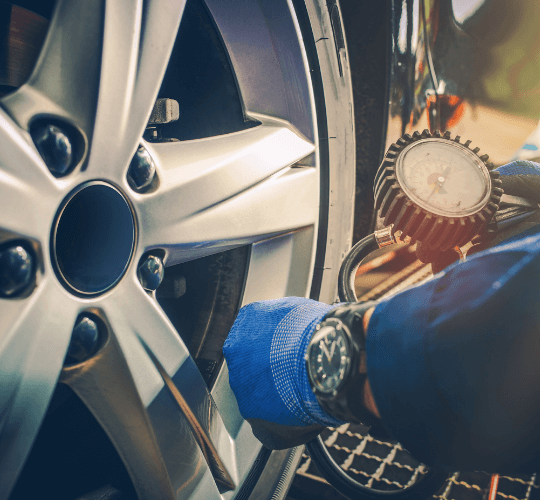
As the weather cools down, your tire pressure may drop with the temperatures. You might find yourself needing tire inflation. The local mechanics at Chapel Hill Tire are here to help! Here is what you need to know about low tire pressure.
Tire Pressure Overview
Tire pressure is measured in PSI (pound-force per square inch). Common tire pressures range from 32 to 35 PSI, but this can depend on your vehicle type, tire features, tire brand, and the temperature outside. When looking for your recommended tire pressure, you may not find this information listed in your owner’s manual. Instead, tire pressure recommendations are often listed on a sticker inside of the driver’s side door frame.
Manual Tire Pressure Checks
To check your tire pressure, you will need a gauge. If you do not already have one, these tools are inexpensive and helpful to keep in your car. For an accurate read of your tire pressure, it is recommended that you wait 3 hours after driving before completing the tire pressure check. The friction of your wheels turning can impact your tire temperature and pressure.
Once you are ready to get started, consult the tire information sticker inside of your door frame to determine what your tire pressure should be. Next, connect the gauge firmly to each of your tire’s valve stems. You will see the gauge dial rise. Once it has reached a steady PSI reading, that is your tire pressure.
Automatic Vehicle Tire Pressure Systems
Most vehicles have automatic tire pressure systems that will warn you when your tire pressure becomes low. Older vehicles do this by examining your tire turn speed. Full tires create a larger rotation than deflated tires. Your vehicle senses when one tire is turning more quickly than the others and alerts you that your tire pressure is low.
Newer vehicles have advanced tire pressure systems that gauge and monitor tire PSI. It is best not to rely entirely on either of these systems, as they are not immune to glitches or inaccuracies.
Free Professional Tire Pressure Checks
Perhaps the best way to accurately read your tire pressure levels is with a professional check. Overfilled tires are just as harmful as underfilled tires. A professional technician knows how to achieve this essential balance. Mechanics have professional-grade gauges and the expertise to comprehensively examine your tire health. Best of all, leading mechanics may provide this service for free. For example, the experts at Chapel Hill Tire automatically check tire pressure during each oil change visit. If you are low, our experts will also inflate your tires for free.
If your tires are protected under our Road Hazard Protect plan, you can get free tire refills (among other tire services) at any time.
What Causes Deflated Tires?
Low tire pressure is one frequent issue with multiple possible sources. Here is a look at some of the common reasons why your tires may deflate:
Low Pressure Problem 1: Cold Weather and Tire Pressure
During the fall and winter seasons, many drivers begin to find their tire pressure low. The cold weather can cause your tire pressure to lower by 1-2 PSI for every 10 degrees the temperature drops. This is the one tire pressure change that is not caused by air loss. Rather, the air inside of your tire condenses when it is cold and expands when it is hot. This makes the fall and winter seasons popular times for tire pressure checks.
Low Pressure Problem 2: Nails or Punctures in Tires
Damaged tires are a driver’s worst fears when tire pressure becomes low. Nails and other tire hazards can get kicked up by other drivers on the road, puncturing your tires and releasing some of the pressure. In this case, your tire will need to be patched so it can maintain proper air levels.
Low Pressure Problem 3: Potholes and Tire Pressure
Your tires are designed to absorb the impact of bumps on the road. However, frequent road inconsistencies and severe potholes will create a greater tire impact. As your tire absorbs this extra pressure, it may release some of its air.
Low Pressure Problem 4: Bent Rims and Lowered Tire Pressure
A bent rim or wheel can disrupt the seal that holds your tire’s air in, leading to low tire pressure or frequent flats.
Low Pressure Problem 5: Leaking Schrader Valve
Have you ever wondered what those small caps on your tire valve stems do? They protect your Schrader valve from dirt, water, dust, and other contaminants. If contamination gets bad enough, the tire Schrader valve can begin to gradually leak air.
Low Pressure Problem 6: Normal Tire Wear
Over time, tires gradually release air, even when engaging in your standard driving patterns. Your tires will naturally lose about 1 PSI every month. This is why frequent tire pressure checks are essential. Ideally, you should check them every 1-3 months.
Importance of Full Tires
Low tire pressure is more than just an irritating warning light on your dashboard. It can have several immediate impacts on you, your car, and your wallet:
Lower Fuel Economy and Low Tire Pressure
Have you ever tried to ride a bike with deflated tires? It is much more challenging compared to a bike with full tire pressure. The same logistics can be applied to your vehicle. It has to work harder to run on deflated tires, meaning lower fuel efficiency, more vehicle emissions, and more money spent at the pump.
Vehicle Handling and Safety Concerns
Perhaps most importantly, low tire pressure can impact your vehicle handling. The friction between your tires and the road is responsible for vehicle responsiveness. When your tires are running on low pressure, this grip becomes compromised, delaying your braking and making steering less responsive. It can also leave you more vulnerable to flat tires and other issues on the road.
Failed Inspection from Tire Issues
Between low tire pressure and the issues it creates, you can face a wide variety of challenges on the road. Tire structural issues, poor vehicle handling, and any other safety concerns can cause you to fail your annual safety inspection. The lowered fuel economy from deflated tires can cause you to fail your emissions inspection.
Tire Damage with Low Pressure
The air inside of your tires maintains your tire’s structural integrity. Poorly-inflated tires will increase the surface area of your tire against the road, causing sidewall damage. This can also create flat tires, bent rims, and other costly issues.
Chapel Hill Tire | Tire Service Near Me
Whether it is a simple tire pressure check or as complex as a rim repair, Chapel Hill Tire is here for all of your tire service needs. Our local mechanics proudly serve drivers throughout the Triangle from our locations in Raleigh, Durham, Carrboro, and Chapel Hill. Make an appointment with our mechanics or give us a call to get started today!
We’ve got all your automotive repair needs covered.


